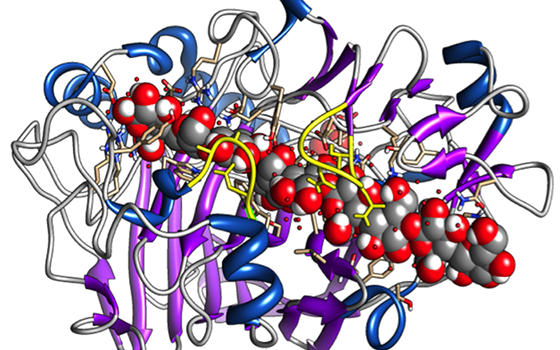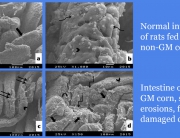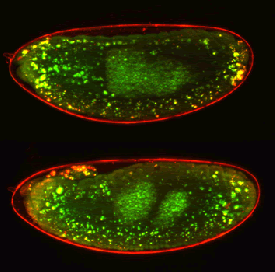A new German / British study has confirmed previous findings showing that genetically engineered enzymes are potent allergens eliciting immediate-type sensitization.
Sensitising effects of genetically modified enzymes used in flavour, fragrance, detergence and pharmaceutical production: cross-sectional study
Full Paper: oem.bmj.com
Authors: Lygia T Budnik, Edwin Scheer, P Sherwood Burge, Xaver Baur
Abstract
Objectives
The use of genetically engineered enzymes in the synthesis of flavourings, fragrances and other applications has increased tremendously. There is, however, a paucity of data on sensitisation and/or allergy to the finished products. We aimed to review the use of genetically modified enzymes and the enormous challenges in human biomonitoring studies with suitable assays of specific IgE to a variety of modified enzyme proteins in occupational settings and measure specific IgE to modified enzymes in exposed workers.
Methods
Specific IgE antibodies against workplace-specific individual enzymes were measured by the specific fluorescence enzyme-labelled immunoassay in 813 exposed workers seen in cross-sectional surveys.
Results
Twenty-three per cent of all exposed workers showed type I sensitisation with IgE antibodies directed against respective workplace-specific enzymes. The highest online casino in canada sensitisation frequencies observed were for workers exposed enzymes derived from α-amylase (44%), followed by stainzyme (41%), pancreatinin (35%), savinase (31%), papain (31%), ovozyme (28%), phytase (16%), trypsin (15%) and lipase (4%). The highest individual antibody levels (up to 110 kU/L) were detected in workers exposed to phytase, xylanase and glucanase. In a subgroup comprising 134 workers, detailed clinical diagnostics confirmed work-related symptoms. There was a strong correlation (r=0.75, p<0.0001) between the symptoms and antibody levels. Workers with work-related respiratory symptoms showed a higher prevalence for the presence of specific IgE antibodies against workplace-specific enzymes than asymptomatic exposed workers (likelihood ratio 2.32, sensitivity 0.92, specificity 0.6).
Conclusions
Our data confirm the previous findings showing that genetically engineered enzymes are potent allergens eliciting immediate-type sensitisation. Owing to lack of commercial diagnostic tests, few of those exposed receive regular surveillance including biomonitoring with relevant specific IgE assays.



































































